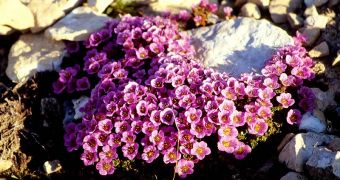Researchers from the Department of Horticulture at The Pennsylvania State University carried out a study that assessed the influence that the type of substrate and depth can have on five common green roof plants.
There are certain advantages in having a garden on the roof of your house but these plants have certain needs and it is not always easy to meet them.
Plants on roofs must bear extreme rooftop conditions, so the substrates in which they grow must respect some very strict horticultural and structural standards.
The concept of having plants of rooftops is an old one, and the reasons behind it are simple: green roofs can reduce stormwater runoff, improve air quality, mitigate urban heat, decrease the demand for air conditioning and greenhouse gas emissions, and they also provide a habitat for birds and wildlife.
Very popular in Europe, the concept starts catching up in North America too, so there are a few things that people who intent on growing green roofs need to know, like, for example, the fact that substrates are crucial and that deeper ones retain more water for plants during dry periods, but they also weigh more, especially when they are near saturation.
Christine E. Thuring, Robert D. Berghage, and David J. Beattie conducted a study with the purpose of evaluating the effects of substrate type and depth on the establishment and early growth of five plants that are popular in North American green roof designs.
Their hypothesis was that early drought is more harmful for plants grown in shallow rather than deeper substrate depths, and also, the plants that survived early drought would produce less shoot biomass than those that underwent late drought.
The five popular kinds of roof plants were two stonecrops, one ice plant, and two herbaceous perennials, and they were all planted in different depths – 30, 60 and 120 mm, of expanded shale and expanded clay – two green roof substrates, commercially available.
Three droughts treatments were applied to study flats inside a plasticulture tunnel – no drought, 2 weeks early drought and 2 weeks late drought.
At the end of the experiment, the researchers concluded that the two stonecrops did well under most conditions (except for tasteless stonecrop, stunted by early drought).
As for the ice plant, it performed erratically and just like the maiden pink, it was affected by the drought during establishment.
Finally, the herbaceous perennials had the fewest survivors in the expanded shale, once subjected to any drought.
The three most resilient species used in the study (saxifrage pink, white stonecrop and tasteless stonecrop) always produced more shoot biomass as the substrate depth increased, whether water was available or not.
Maybe the best choice for your green roof could be the saxifrage pink, because besides being resistant, it is also attractive and it has a persistent flowering habit.
The scientists concluded that “this experiment revealed the variability among drought-tolerant species to various treatments, as well as the different plant responses to substrate type during drought.”
The study was published in HortTechnology.

 14 DAY TRIAL //
14 DAY TRIAL //